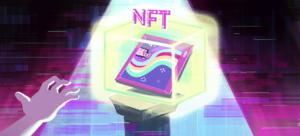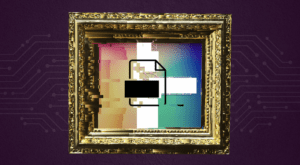Jason “Artnome” Bailey is well-known in cryptocurrency circles, but did you know there’s another relevant circle he is famous in?
The art world.
Bailey describes himself as an “artist raised in a family of engineers,” and always wanted to be an artist since he was a child. However, he found that there weren’t too many opportunities once graduating from art school.
Jason Bailey’s rise from art blogger to NFT pioneer

Jason Bailey worked in the tech sector for a while but then decided to write about the intersection of art and technology through a blog he created, Artnome. While at Artnome, Bailey concluded that it was only a matter of time before blockchain disrupted the art world. He realized this in 2017, long before the rise of NFTs, in an article called “The Blockchain Market Is Here.” Artnome also boasts the world’s largest analytical art database.
Thanks to his writing, the entrepreneur has been invited to events all around the world to speak about NFTs, art, technology, and more. The Princess of Bahrain has even personally requested that he speak at an event before. His writings have even inspired others to create NFT platforms.
Jason Bailey is also considered an NFT pioneer in addition to being an entrepreneur, as he was the first collector on SuperRare. He also often goes by the pseudonym “Artnome.” You can often find him on crypto-related podcasts, speaking about the crypto sector, the metaverse, and other related topics. He’s also the CEO of ClubNFT, a startup.
Protecting NFTs in the metaverse
 Countless blockchain entrepreneurs have emerged over the past couple of years, but Bailey has a different goal than many of them. While many people are trying to create their own platform or marketplace, Jason Bailey is focused on figuring out how to protect NFTs, especially with the rise of the metaverse.
Countless blockchain entrepreneurs have emerged over the past couple of years, but Bailey has a different goal than many of them. While many people are trying to create their own platform or marketplace, Jason Bailey is focused on figuring out how to protect NFTs, especially with the rise of the metaverse.
Bailey has launched a startup called ClubNFT, designed to protect NFT collectors. ClubNFT recently announced $3 million in seed funding, and will create next-generation tools to protect NFT collections. Some of these tools are still in the discovery phase, but ClubNFT hopes to roll them out in early 2022. He co-founded the company with Chris King, formerly of Google. The company specifically addresses some of the limitations of IFPS technology.
As an NFT entrepreneur, Bailey has personal experience with this problem. He bought the first NFT from an artist named XCopy, whose work has gone on to sell for millions of dollars. Unfortunately, Bailey’s NFT isn’t worth anything because the marketplace where he purchased it no longer exists. His startup hopes to create solutions where collectors can still “back up” their NFTs even if an NFT marketplace closes for good.
Blockchain can benefit the art world beyond NFTs
 Bailey believes that the art world’s new fascination with blockchain doesn’t mean that NFT are the only use cases for the future ahead. As an NFT entrepreneur, Bailey strikes a much more cautious tone regarding smaller NFT marketplaces, even warning: “If we’re not careful, many NFTs will be gone along with them.”
Bailey believes that the art world’s new fascination with blockchain doesn’t mean that NFT are the only use cases for the future ahead. As an NFT entrepreneur, Bailey strikes a much more cautious tone regarding smaller NFT marketplaces, even warning: “If we’re not careful, many NFTs will be gone along with them.”
One of the admirable things about Jason Bailey is that he doesn’t seem like someone who cares more about improving the NFT space than making millions of dollars. Even with Artnome, Bailey’s goal wasn’t to grow his art blog to the point where it was making millions of dollars; it was primarily focused on improving art’s historical record. Specifically, he describes himself as “an art nerd trying to trigger an art analytics revolution.”
He does believe that an NFT is revolutionary in terms of provenance and digital scarcity, but he also thinks that some issues need to be addressed. Jason Bailey has even created Green NFTs, a bounty system to encourage creatives to figure out how NFTs can be more environmentally-friendly. It is unclear whether this will eventually become its own startup.
Ultimately, Jason Bailey is interested in all things art and technology: whether it’s AI, machine learning, the metaverse, blockchain, or something new. He also remains interested in how tokenization gives rise to fractional ownership, as well.
Lastly, he still believes there’s a lot of room for the art world to change, sharing that “the walls between gaming, music, and art are getting foggier.”
Now that’s a world we can get behind!
About the Author

Neil Mathew
About Decentral Publishing
Decentral Publishing is dedicated to producing content through our blog, eBooks, and docu-series to help our readers deepen their knowledge of cryptocurrency and related topics. Do you have a fresh perspective or any other topics worth discussing? Keep the conversation going with us online at: Facebook, Twitter, Instagram, and LinkedIn.


